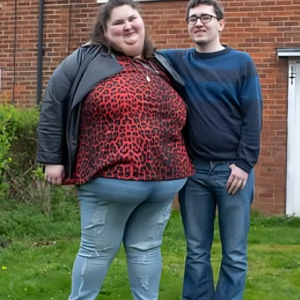Zoraya ter Beek is 28, lives in a quiet Dutch town near the German border, shares a home with her 40-year-old boyfriend and their two cats—and says her suffering has become unlivable. Though physically healthy, she describes years of depression, autism, and borderline personality disorder that have hollowed out her plans and her hope. In early May, she intends to undergo euthanasia—a “nice nap,” as she puts it—and not wake up.
In the Netherlands, voluntary euthanasia and assisted suicide are legal under strict conditions. The Regional Euthanasia Review Committees explain that euthanasia involves a physician administering life-ending medication at the patient’s explicit request, while assisted suicide means the patient takes the medication themselves. In both cases, the request must be voluntary and carefully considered, the suffering must be unbearable with no prospect of improvement, and medical standards must be followed and reviewed after death.
Ter Beek says her psychiatrist told her there was nothing more to try, no realistic chance of getting better. That conviction shaped her decision to set a date in May. She describes a calm, deliberate process at home: no music, her partner nearby, a doctor who takes time to ease the nerves with conversation. There will be a sedative first, then the medication that stops the heart. Afterward, a review committee will examine the case to ensure all legal criteria were met. She doesn’t want a grave that needs tending; instead, she and her boyfriend have chosen a peaceful spot in the woods for her ashes.
Her choice has intensified a debate already simmering across countries where medically assisted death is permitted. Critics worry that what was once framed as an extraordinary last resort for the terminally ill is becoming normalized, particularly for people with psychiatric conditions who might otherwise recover with time and support. Healthcare ethicist Stef Groenewoud says she’s seeing euthanasia placed on the table more readily, especially for younger patients with mental illness. Theo Boer, who spent a decade on a Dutch review board, argues the practice has drifted from “last resort” toward “default option,” reinforced by laws that reduce stigma, online cultures that romanticize the idea, and vocal right-to-die activism.
Public reaction to ter Beek’s story reflects that tension. Many people express shock and plead for her to seek more help, sharing their own histories of depression and eventual recovery. Others direct anger at the psychiatrist they believe gave up too soon. And some acknowledge the fear that ter Beek herself articulates—the unsettling uncertainty of death, and of what, if anything, comes next.
Supporters of assisted dying emphasize autonomy and relief from relentless pain—physical or psychological—when all meaningful treatments are exhausted. Opponents counter that mental health is uniquely variable; what feels impossible today may be manageable tomorrow with different therapy, community, medication, or simply time. Both sides agree on one thing: the stakes are irreversible.
Zoraya Ter Beek, a 28-year-old woman from the Netherlands, will undergo euthanasia in May due to severe mental health challenges.
Ter Beek has stated that she has struggled with depression, autism, and borderline personality disorder throughout her life.
After doctors informed… pic.twitter.com/E2LnWDh4gH
— Morbid Knowledge (@Morbidful) April 4, 2024
Legal frameworks continue to evolve. As of late 2023, various forms of physician-involved life termination or assistance—under local rules and safeguards—exist in countries including the Netherlands, Belgium, Switzerland, Germany, Canada, Australia, France, Japan, and in a number of U.S. states. Each jurisdiction draws its own lines around eligibility, procedure, and oversight, and those lines are constantly debated.
Ter Beek’s account is stark in its simplicity. She loved the idea of becoming a psychiatrist but says her conditions eroded both that ambition and her day-to-day will. The plan she describes is intimate and domestic: a couch, a partner’s presence, a doctor’s quiet questions, a final drift into sleep. For her, it represents control and an end to what she calls unbearable suffering. For her critics, it is a preventable death in a system too quick to surrender.
However one feels about euthanasia, the story lands where policy meets person. It asks whether relief from mental anguish belongs under the same umbrella as relief from terminal physical pain—and who decides when “no prospect of improvement” has truly been reached. It also asks a more human question: how long, and how hard, should a society keep trying to pull someone back from the edge when they say they cannot keep going?
There are no easy answers in that space between autonomy and protection. Ter Beek admits she is afraid—“the ultimate unknown,” she says. The conversation her case has sparked is likely to continue well beyond May, pushing lawmakers, clinicians, patients, and families to reckon with the boundaries of compassion, choice, and care in the most final of decisions.





